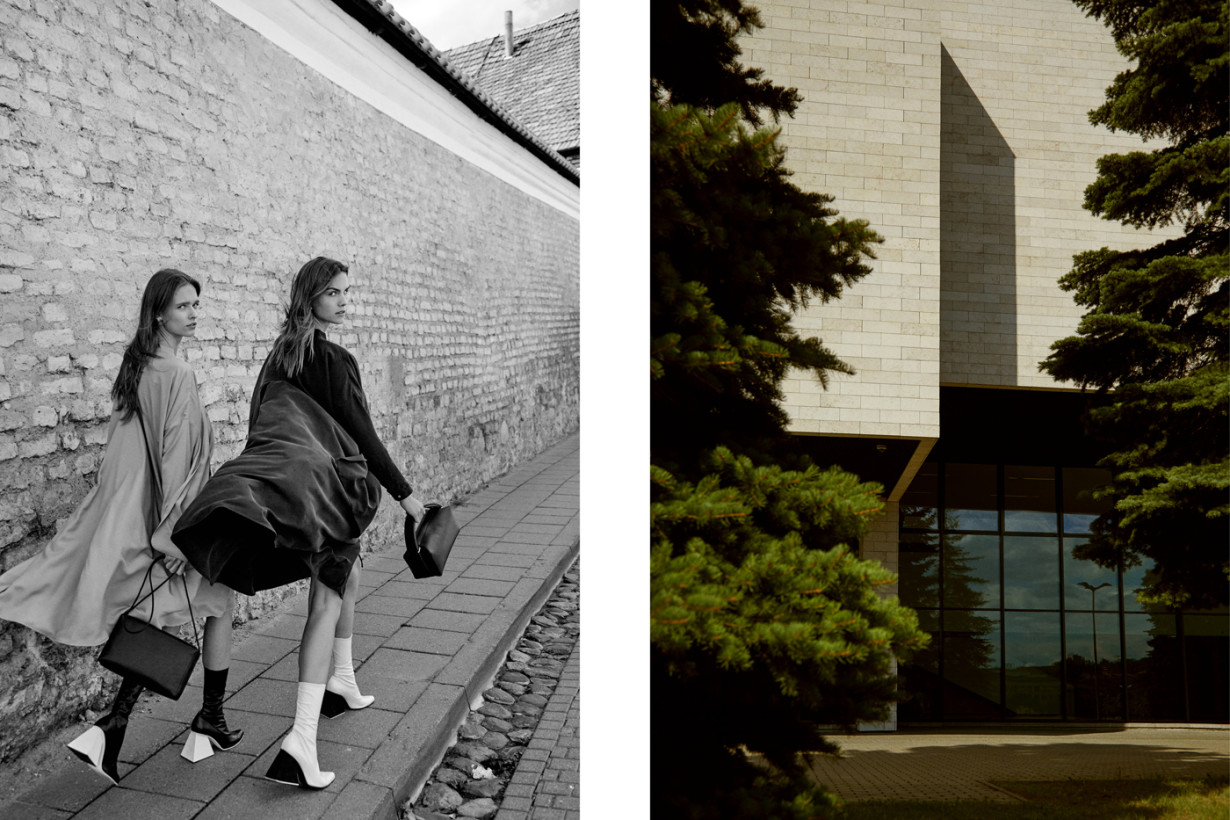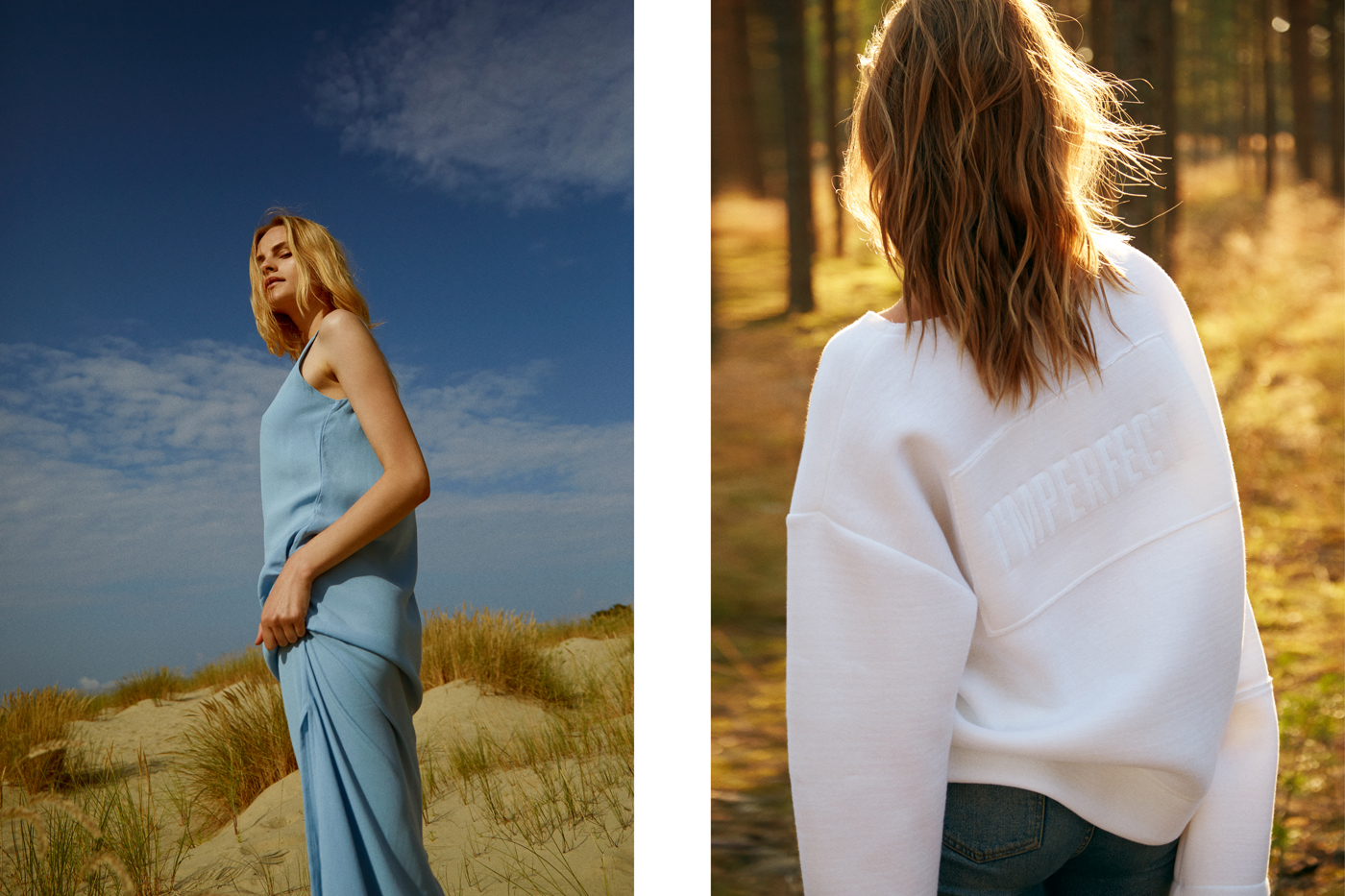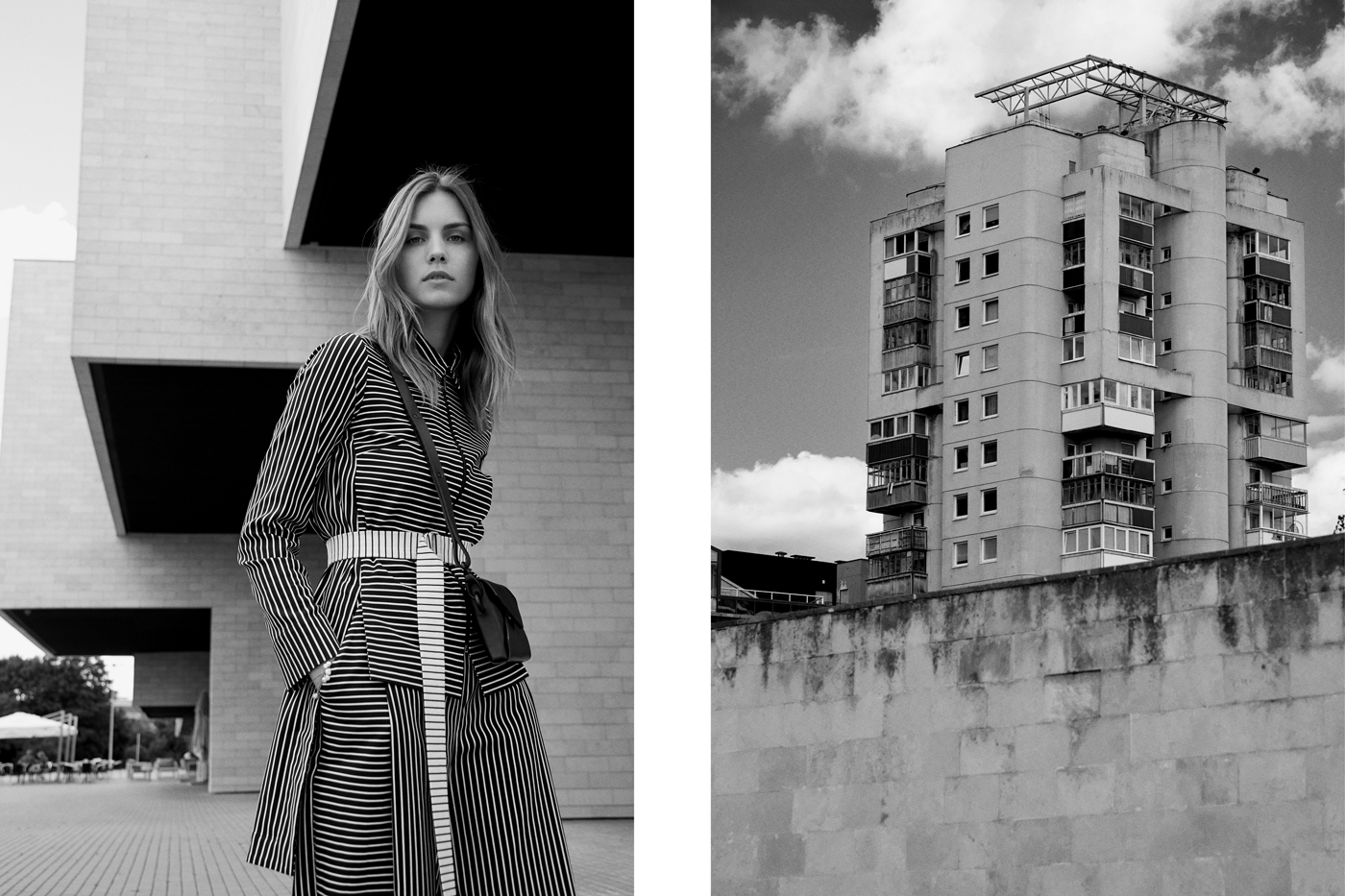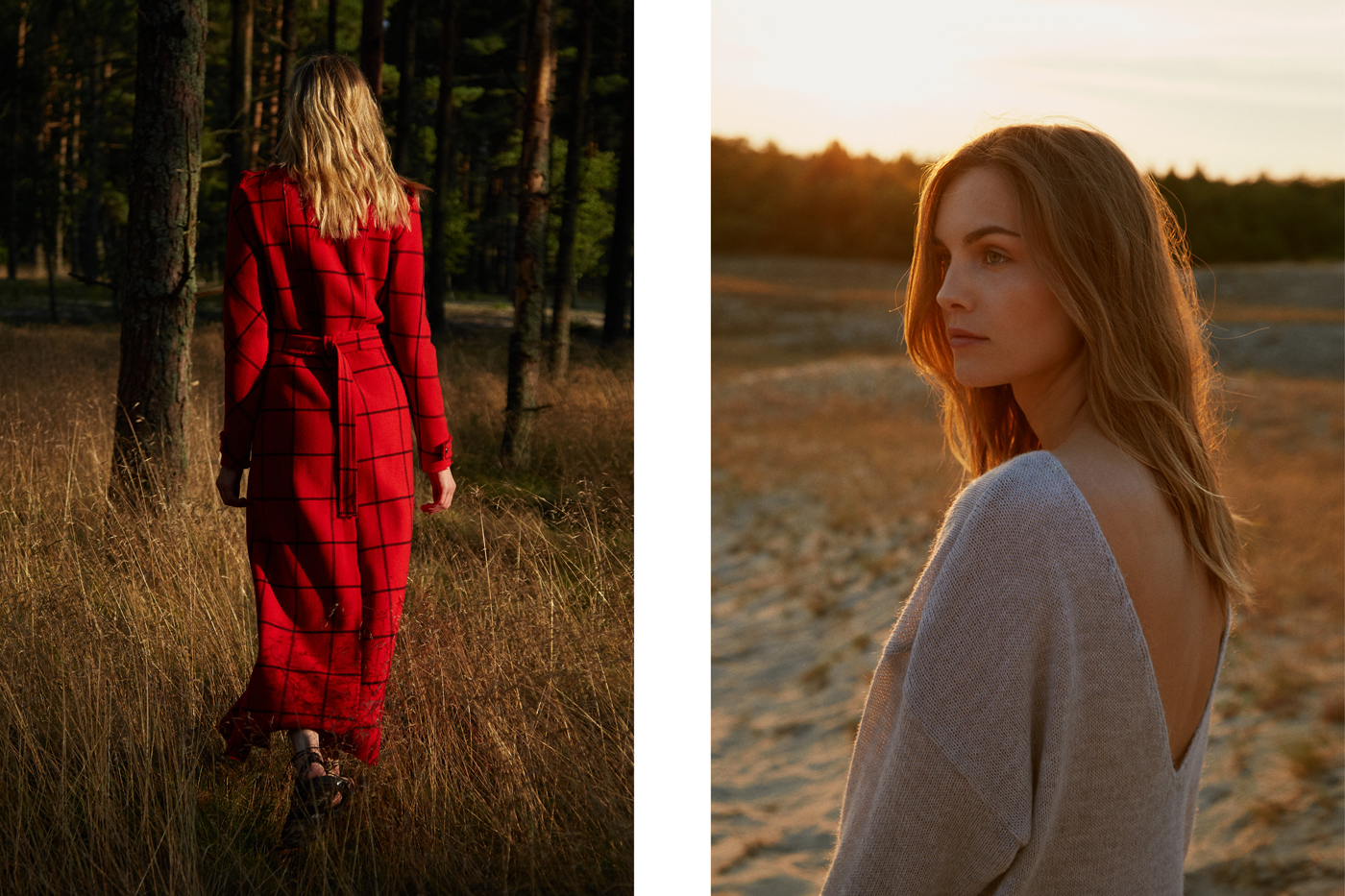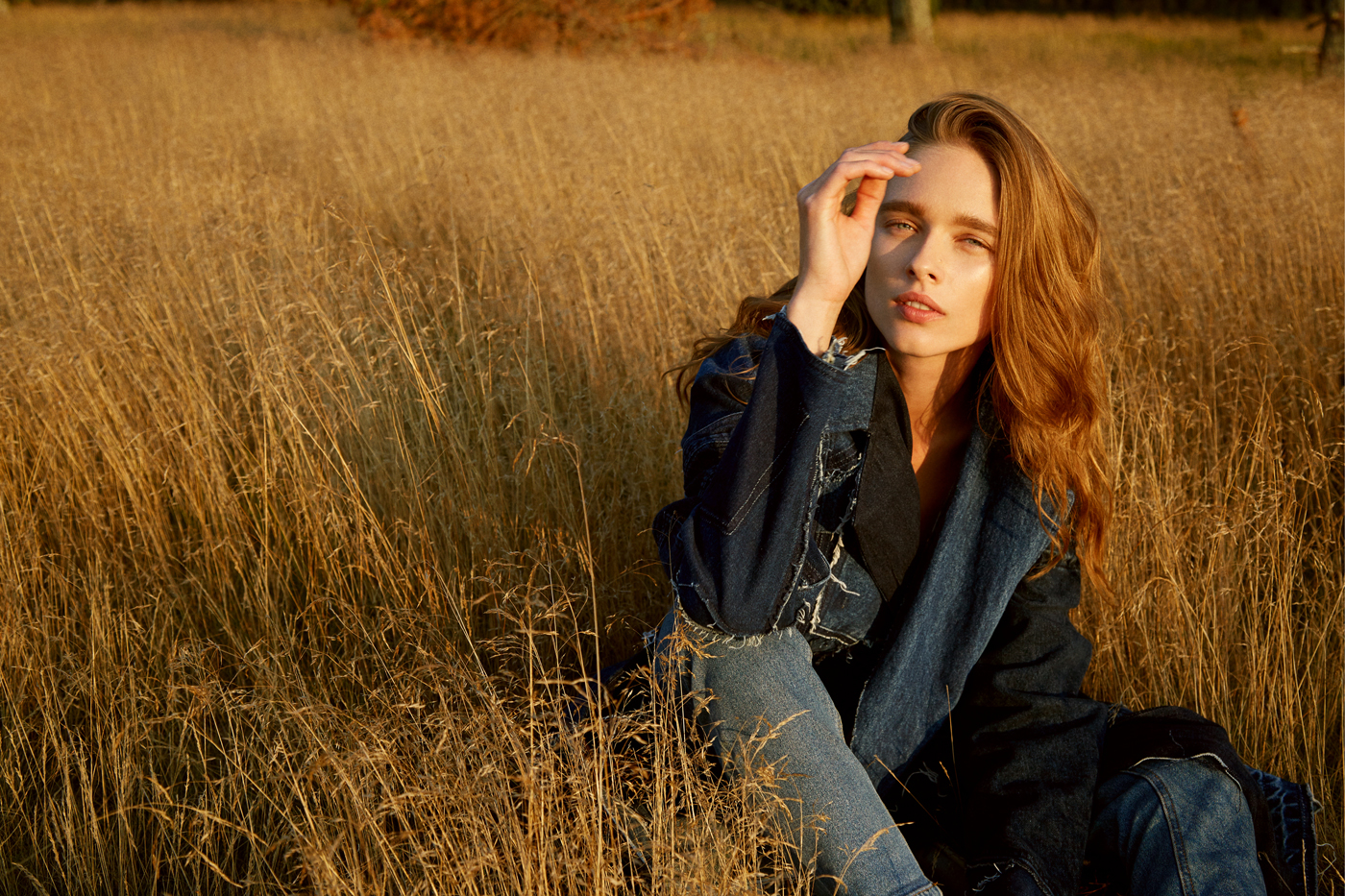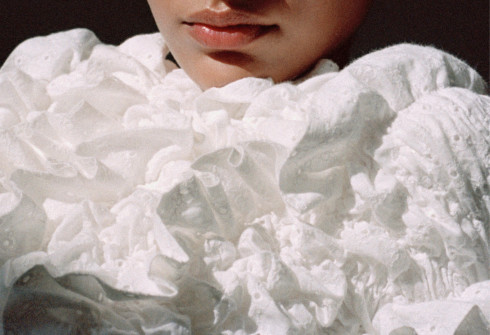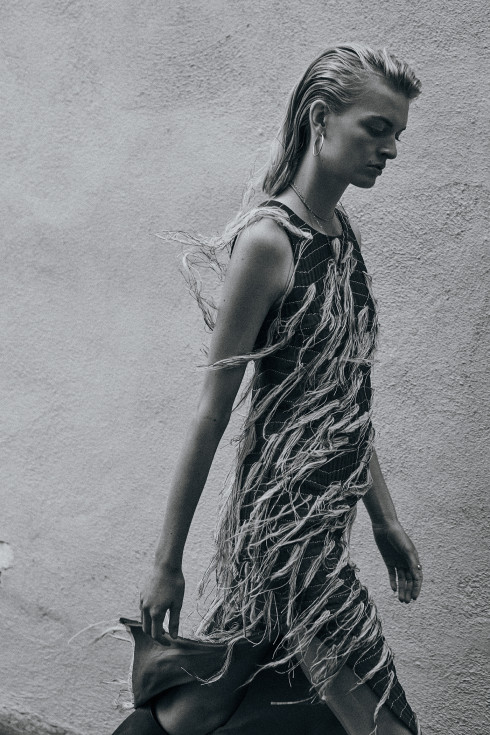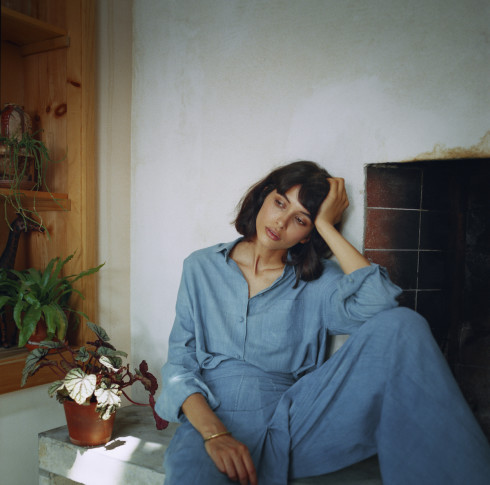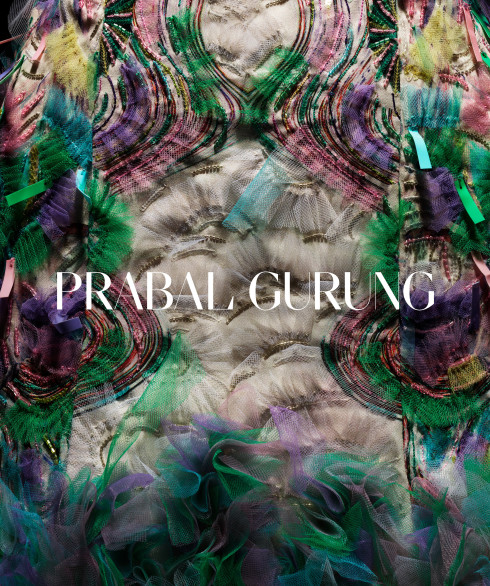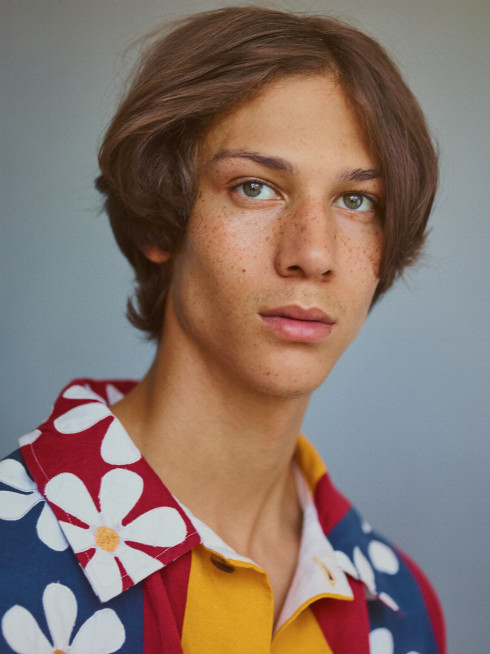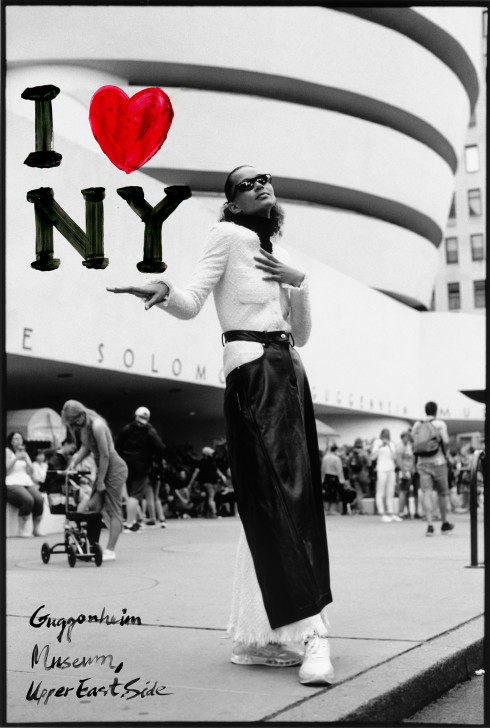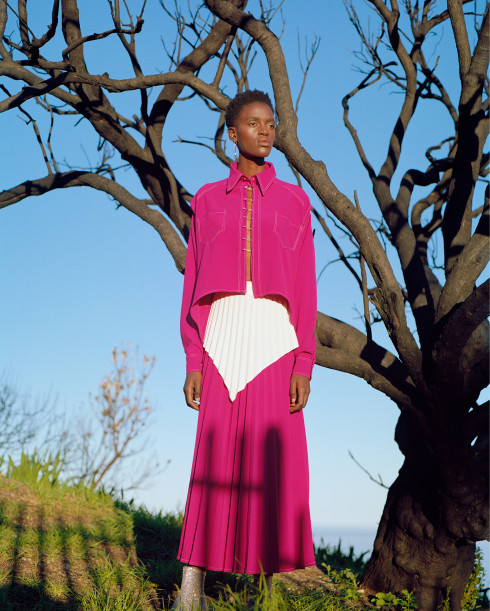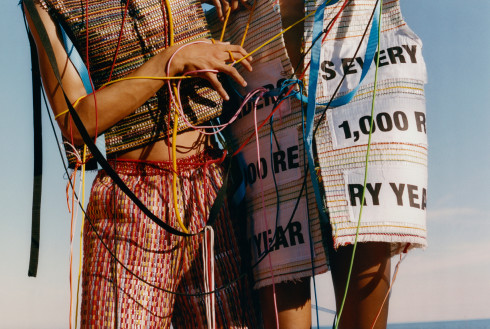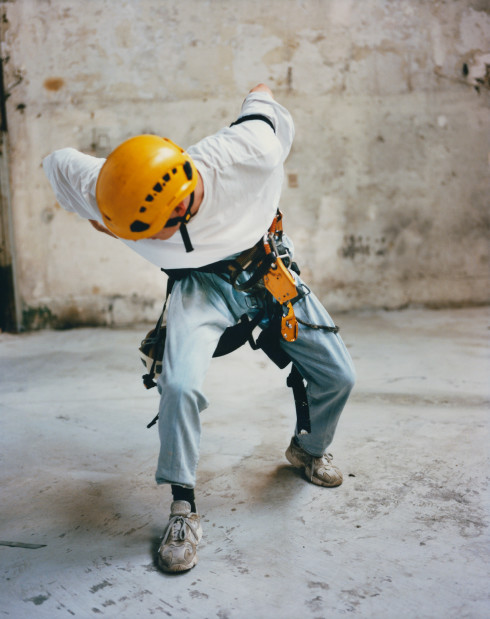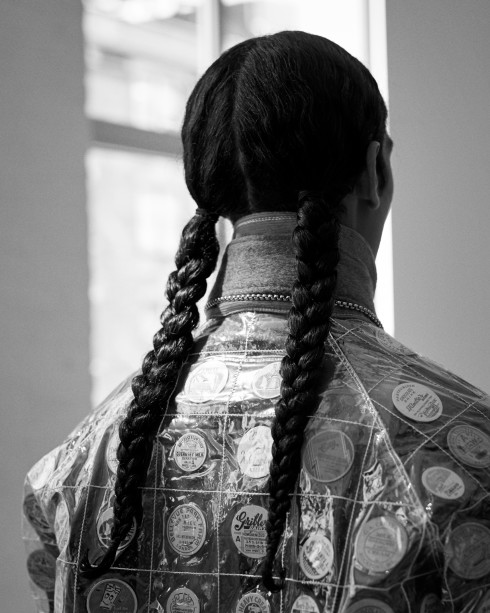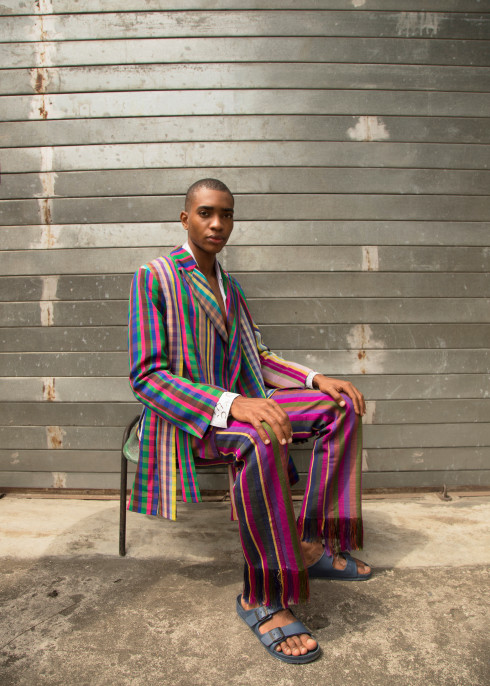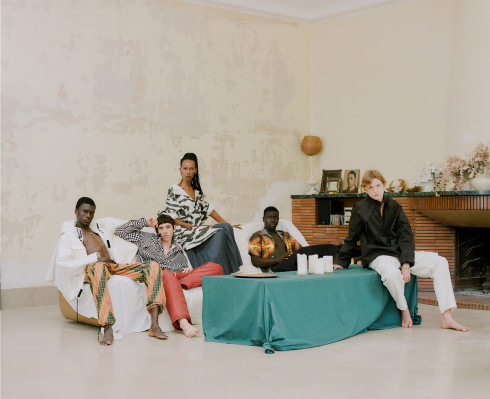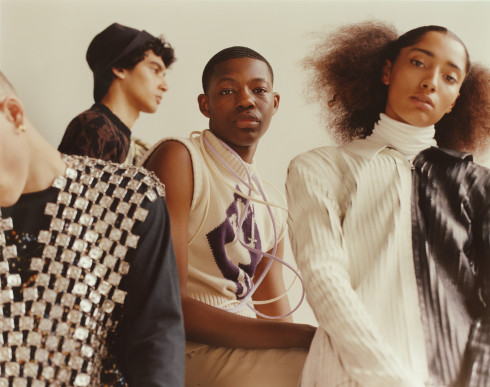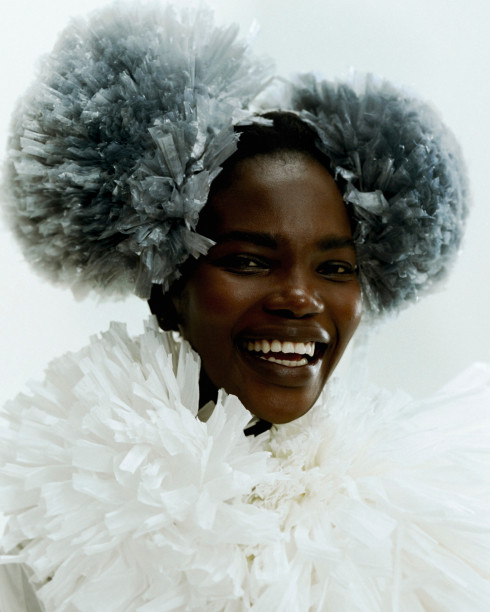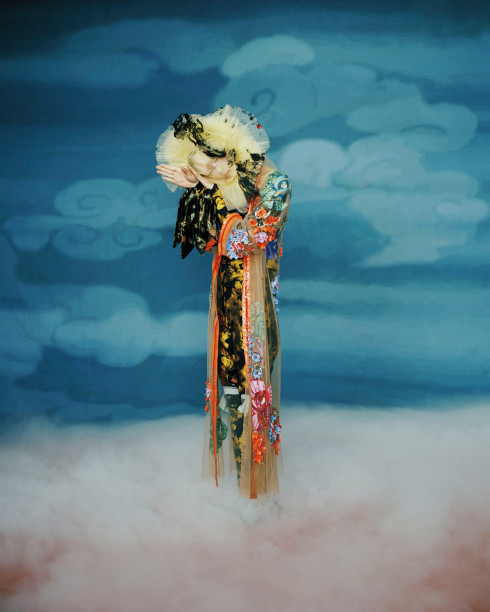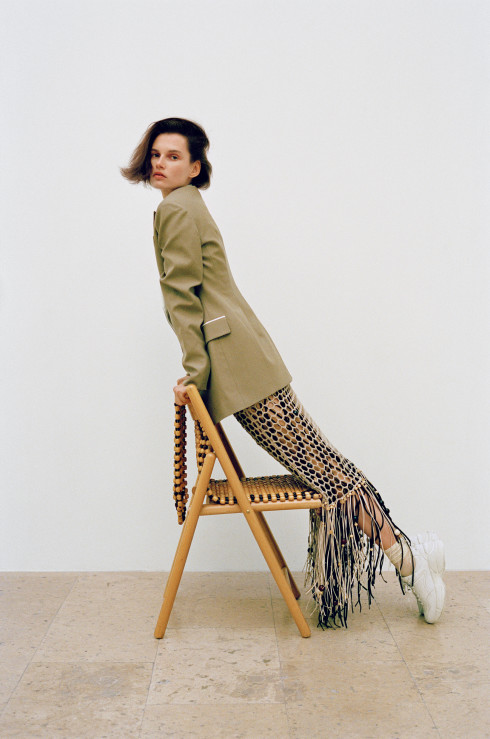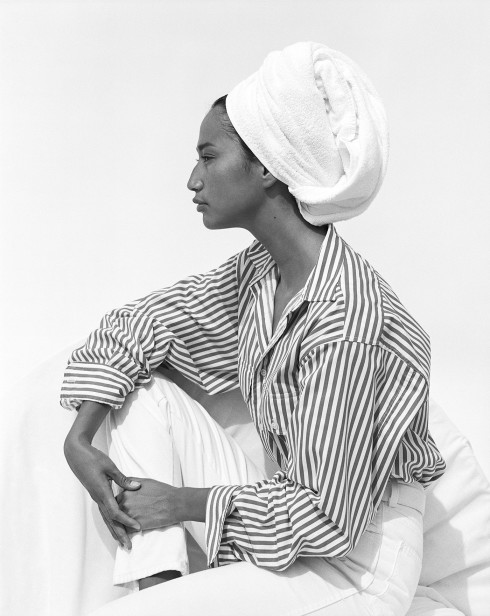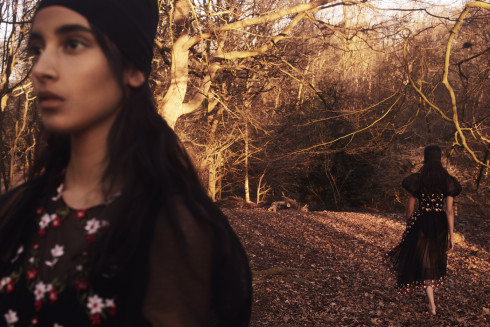- Photography by
- Rokas Darulis
- Katy Lassen
- Styling by
Hair and makeup by Kristina Ralph at Saint Luke Artists. Models: Beegee Margenyte at PMST Models and Kristina Petrosiute and Julija Steponavičiūtė at Baltic Model Management.
BALTIC POWER, PART TWO
On the edge of the Baltic Sea, the small countries of Estonia, Latvia, and Lithuania help mark the divide between Russia and the rest of Europe, a border that, with Trump’s discrediting of NATO and coziness to Putin, is in the news again as a potential future battleground. Formerly part of the Soviet Union, all three nations have made cautious progress towards Western Europe in the past few decades, and a vibrant cultural scene has sprung up. Earlier this year, photographer Rokas Darulis, now based in London, returned home to his native Lithuania to capture the country’s mix of rustic beauty and urban strength, capturing three Lithuanian models dressed in all local designers by Katy Lassen. The resulting portfolio, the second half of which appears below, is a reminder that there is interesting and surprising work happening everywhere, if you only know how to look.
ATUKO
Atėnė Malinauskaitė realized how difficult it was to pronounce her surname when she first started her brand, Atuko. “As you can see, my surname is really too difficult to pronounce when you are not local. That’s why I realized I have to do something about it, especially when I saw that most of my clients are not from Lithuania,” Malinauskaitė says. Her husband called her “Atuko,” and the name stuck. Malinauskaitė studied fashion design at Vilnius Design College while also studying jewelry design and blacksmithing in another city nearby. She immediately created her first collection straight out of her studies. “You have to put in all your heart and all your time when you study fashion design, especially when you know you want to earn a living from it one day,” she explains. Malinauskaitė designs very unassuming and understated pieces for Atuko. Her latest Fall 2016 collection, “Hide and Seek,” is filled with chunky oversized knitted dresses, sweaters, and cable knits handmade by her mother using a black, white, and gray palette. Malinauskaitė wanted to hide her women in big knits and pleats and show the clothes’s beauty not from a sexual prism. “You do not to be naked to use body language,” Malinauskaitė explains. For her next collection, she plans to create designs with heavy cotton knits and utilize a more feminine, pastel color palette. Atuko was originally sold on Etsy, but Malinauskaitė quickly began selling her designs on her own website. Soon, she will open her own studio on Teatro Street in Vilnius. More than just a company, Atuko is a very personal endeavor. “Fashion for me is not just a business,” Malinauskaitė says. “Maybe it will sound weird, but I have feelings for my creations. I want them to be special.” —Alexandra Sarabia
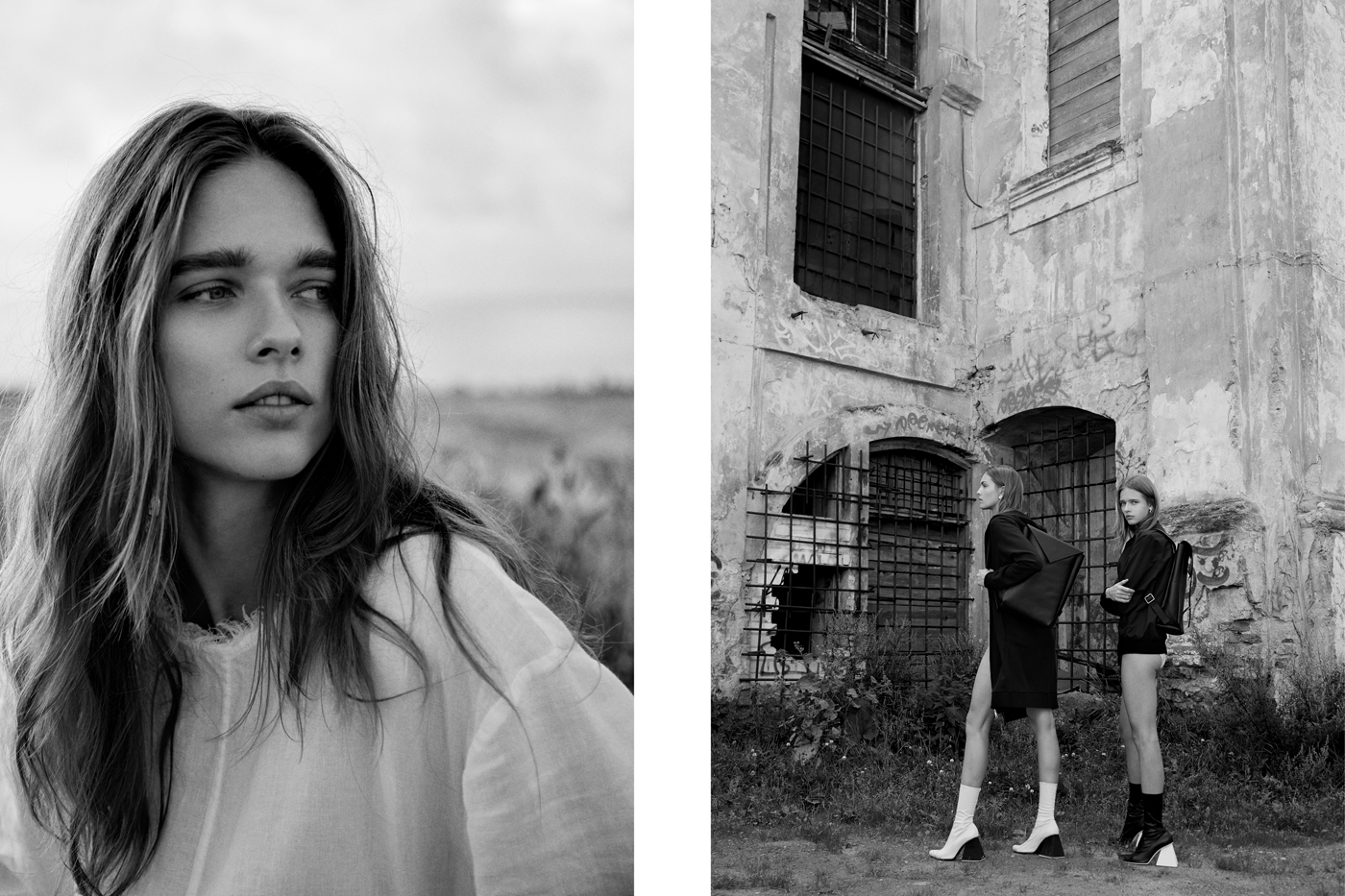
NOSLEEP
A florid, cage-like light box hangs above Opium, one of the most popular dance clubs in Vilnius, the capital of Lithuania. Though the town itself is famous for its Baroque architecture, the venue is a startling injection of rebellious modernity in the Baltics, bringing popular house music and techno acts generally inaccessible in the nearby, medieval Old Town. From this venue, the clothing brand Nosleep was born. Conceived to celebrate the freedom of nightlife, the small streetwear label was founded by two out-of-the-public partners (one, a party planner, and the other, a visual artist; both, self-proclaimed “not designers”) who met through the scene. “We are both Lithuanians. Witnessing the fall of the Soviet Union and the attempts to build a society influenced by Western culture, we grew up in a very important time,” says the latter. “Cold, gray concrete and plenty of abandoned industrial structures. The post-Soviet way of life was still quite conservative—that’s where hedonistic nightlife collided with it and gave birth to many interesting things.” In that spirit, Nosleep represents a new generation of Lithuanians. With a minimalist æsthetic and a smart, almost-survivalist design—hidden details and raw edges meet urban, unisex shapes—the style, which is offered in small, biannual batches along with special one-offs, is as progressive as the concept: to fight for life every day. —Joshua Glass
ERIKAHOC
From thunderously wet summer days to below-freezing winter nights, six to seven months of constant precipitation is standard for Lithuania’s European continental climate. In need of an accessory that could endure these aggressive conditions, Erika Hoc first designed a water-resistant leather backpack for herself. “I knew how I wanted it to look, to feel, and to be worn,” she remembers, despite having no technical training at the time. “I managed to find a special type of thick and durable leather commonly used to make Finnish and Norwegian army boots, and I was lucky enough to find a great group of helpers, teachers, and people that pushed and nagged me every day.” Nearly three years later, the designer’s eponymous line translates that no-nonsense feeling into streamlined accessories with severe lines and a clear attitude that can live year-round, rain or shine. Her inspiration draws from a mathematical background and mingles with philosophy before, finally, finding its place in the street style of today. With every piece’s smallest detail taking the upmost importance, construction and geometry (one dopp kit-sized bag is even named after the silver ratio) is king. Because of this insomniac obsession, pieces can take time—sometimes a month, sometimes a year—but the wait is worth it. “It is important to invest in details and functionality so the new designs are never rushed,” says Hoc. “They take thought.” —Joshua Glass

KRISTINA KRUOPIENYTE
“For a long time, we were closed off from the world. Without the various information, literature, and trends, Lithuania formed a distinct style,” says the designer Kristina Kruopienyte. “It is very important for me now to look to what is happening today.” Dissimilar to her contemporaries who respond to Lithuania’s past with a rebellious jerk of the dial forward, the designer seems self-stranded somewhere in the in-between: reckoning this lost romanticism with the edge of current force. Prided on rhythmic, structural, and graphic details, Kruopienyte’s goal is to present a new angle to fashion’s perspective while also keeping the strong codes of style easy to recognize. “All my childhood, I noticed a natural inclination to paint, sew, embroider, and knit,” explains the designer. “It was always close to me. I spent a lot of time with my grandma, a seamstress.” Her current collection, an abstraction of thigh-highs and cutouts, highlights this more than ever in perhaps her most mature season yet. Quilted denim supplies armor-like layering while soft neutrals join deep cuts as if to counteract the damage. The rest of Kruopienyte’s portfolio, heavily women’s, includes progressive handbags constructed with the designer’s signature leather-strip paneling, fur-furnished gloves, and decade-spanning footwear. Distinctively urban, the brand’s story, says the designer, “takes place in the streets of a fast-paced global city. It mirrors our constantly rotating needs and lifestyle.” —Joshua Glass
FORMUNIFORM
“The next step would be such that there would be no need for a next step,” explains Aiste Nesterovaite, designer of Formuniform, when asked what’s next for her brand. It’s a very strong and reassuring statement for the Lithuanian designer, but it makes sense. The primary design tenet of Formuniform is embedded within the name—uniform. Uniforms imply utility and functionality, not glitz and glamour. The Formuniform look, however, is more than just the conventional definition of uniform, isolated to whatever function the clothing is designed or made for. Nesterovaite wants her uniform to be fluid and work in many different settings. “The uniforms could easily migrate between a restaurant, an office, or even a dirty workspace,” she explains. “The collection was developed with the idea to make the wearer merge with the surroundings.” But she also creates designs that may not seem necessary at the time: “For example, I noticed that my friends are cluttered with many small things they carry with themselves. I designed a system of envelope-shaped bag elements of different sizes that may be attached together in many different ways to accommodate the wearer’s needs, mood, or style.” With these design tenets in mind, the next Formuniform collection will focus on small, everyday accessories like wallets. Based in Vilnius with a degree in product design, Nesterovaite previously worked in various sectors such as interiors, products, and accessories. She also participated in numerous trade fairs and design markets around the world, from Copenhagen to Tokyo. With this global perspective, Nesterovaite believes the design culture in Lithuania is growing very fast, compared to five years ago. “Lithuanian fashion is becoming increasingly diverse in terms of style, the way it is sold, and the perspectives that define the field, but it is also merging with other design fields such as accessories, products, and interiors,” she says. “This is exactly where my creative practice is located as well: in between. This trend might be considered a weak signal, but I feel it may be amplified in the near future.” —Alexandra Sarabia
UNDRESS
Ana Savicka is unlike most designers. First of all, fashion wasn’t her original career path, and secondly, she is only really interested in one garment—the dress. As a result, this form now serves as the core of Savicka’s label, Undress. “I truly believe [the dress] is not only the proof of femininity, but also an entire object that gives us great æsthetic pleasure,” she explains. “The dress itself is the only kind of garment that is complete on its own and totally independent. It also plays various roles in life and tells different stories about the person wearing it, which is why every dress [I design] has a story written down and personally dedicated to the customer.” This enthusiasm with which Savicka discusses dresses doesn’t sound like it comes from someone whose self-described interest in fashion is minimal. But nonetheless, it keeps her focus exacting. “I have never been so much into fashion and never considered it a big phenomenon,” she says. “I got into this industry after being a journalist for almost ten years.” Perhaps it is this background that contributes to the designer’s considered approach. For example, the way she approaches timelessness, which, for Savicka, “means creating long-lasting values, conscious emotional connection. Once the Undress dress is worn, the unique story starts. Timeless garments always have more stories to tell.” Savicka counts location and youth as some of the main benefits of working within the Lithuanian fashion industry. “It is interesting to be a part of a fashion industry that is still creating its identity and finding what value it can add,” she says, pointing to the Made in Lithuania label and the way it reflects traditional tailoring. “We are very fortunate to be able to fulfill the whole production cycle without outsourcing abroad,” Savicka explains of the ability to do everything in house and thus control the quality, which in turn helps to support local dressmakers like Savicka, whose designs we simply couldn’t ignore if we tried. —Rosie Dalton
See part one of our Lithuanian portfolio here.
- Photography by
- Rokas Darulis
- Katy Lassen
- Styling by
Hair and makeup by Kristina Ralph at Saint Luke Artists. Models: Beegee Margenyte at PMST Models and Kristina Petrosiute and Julija Steponavičiūtė at Baltic Model Management.
